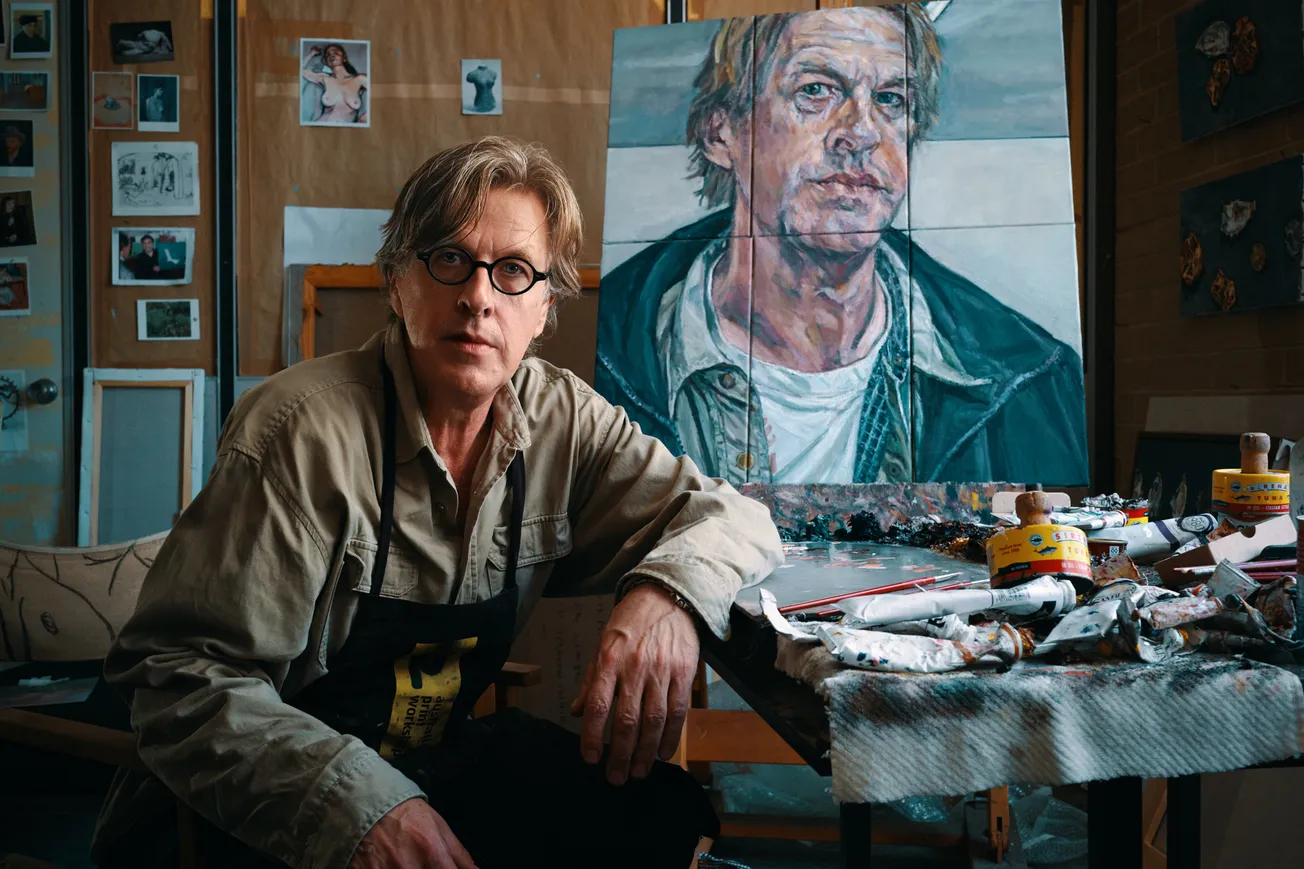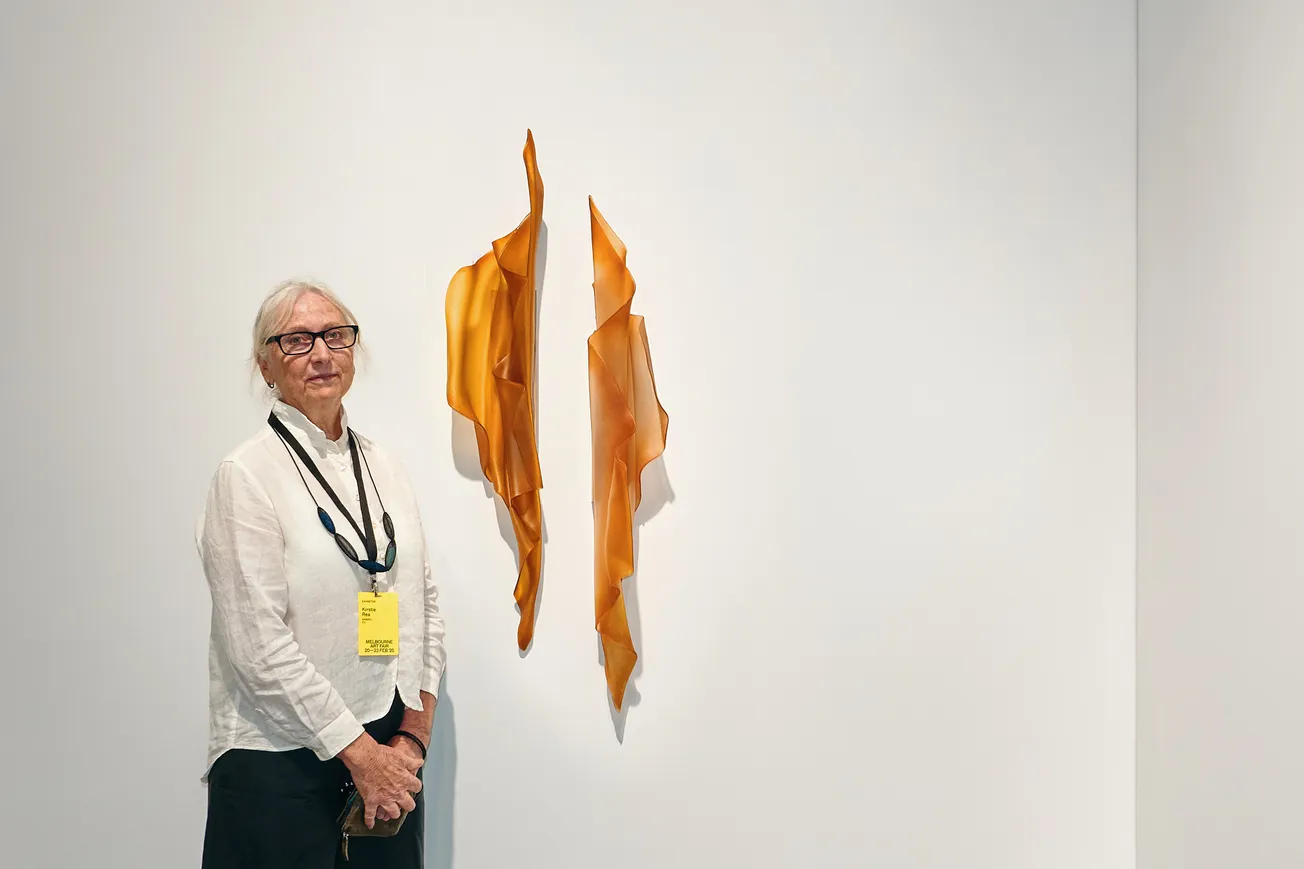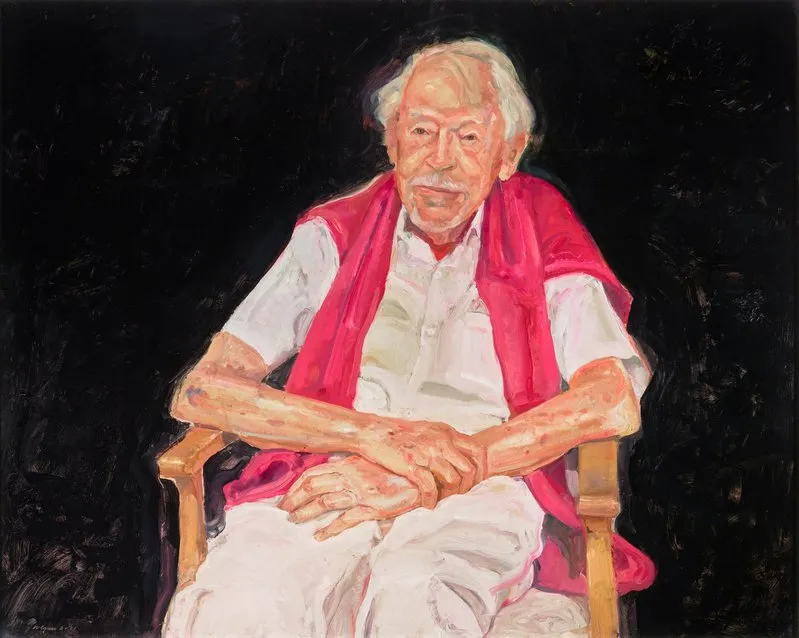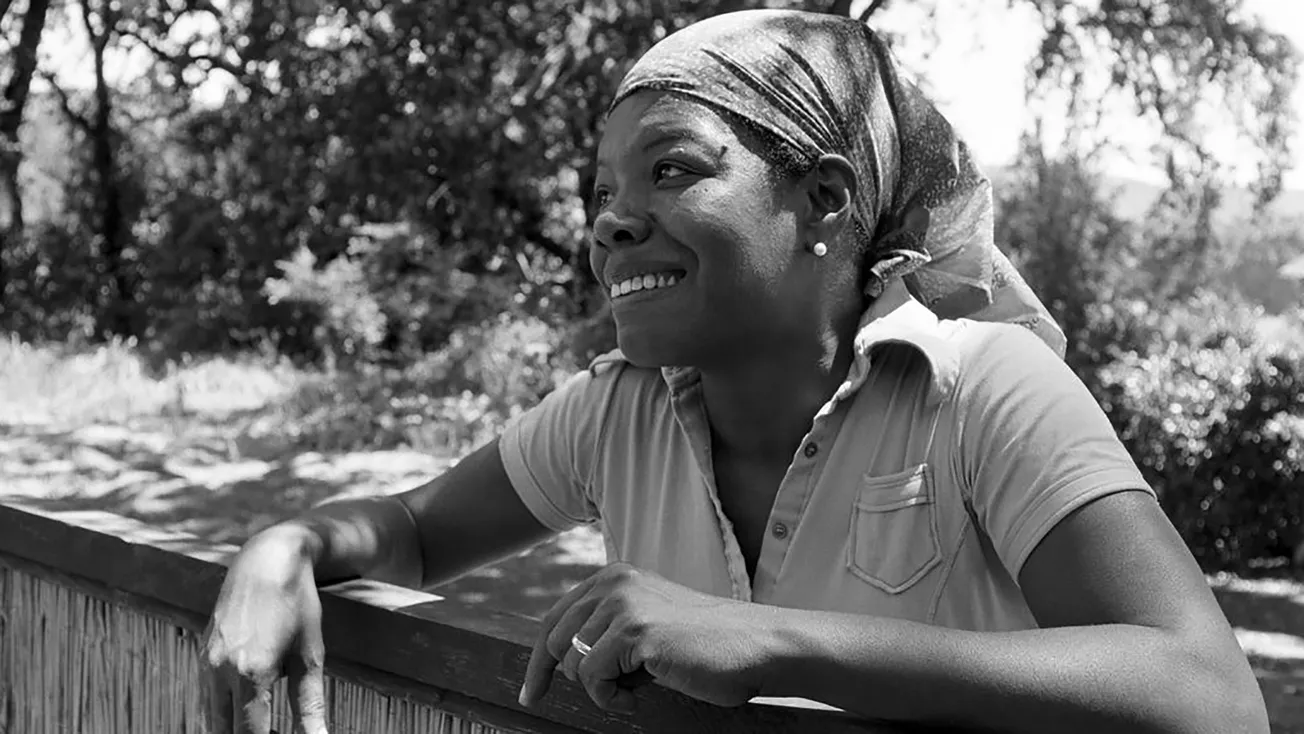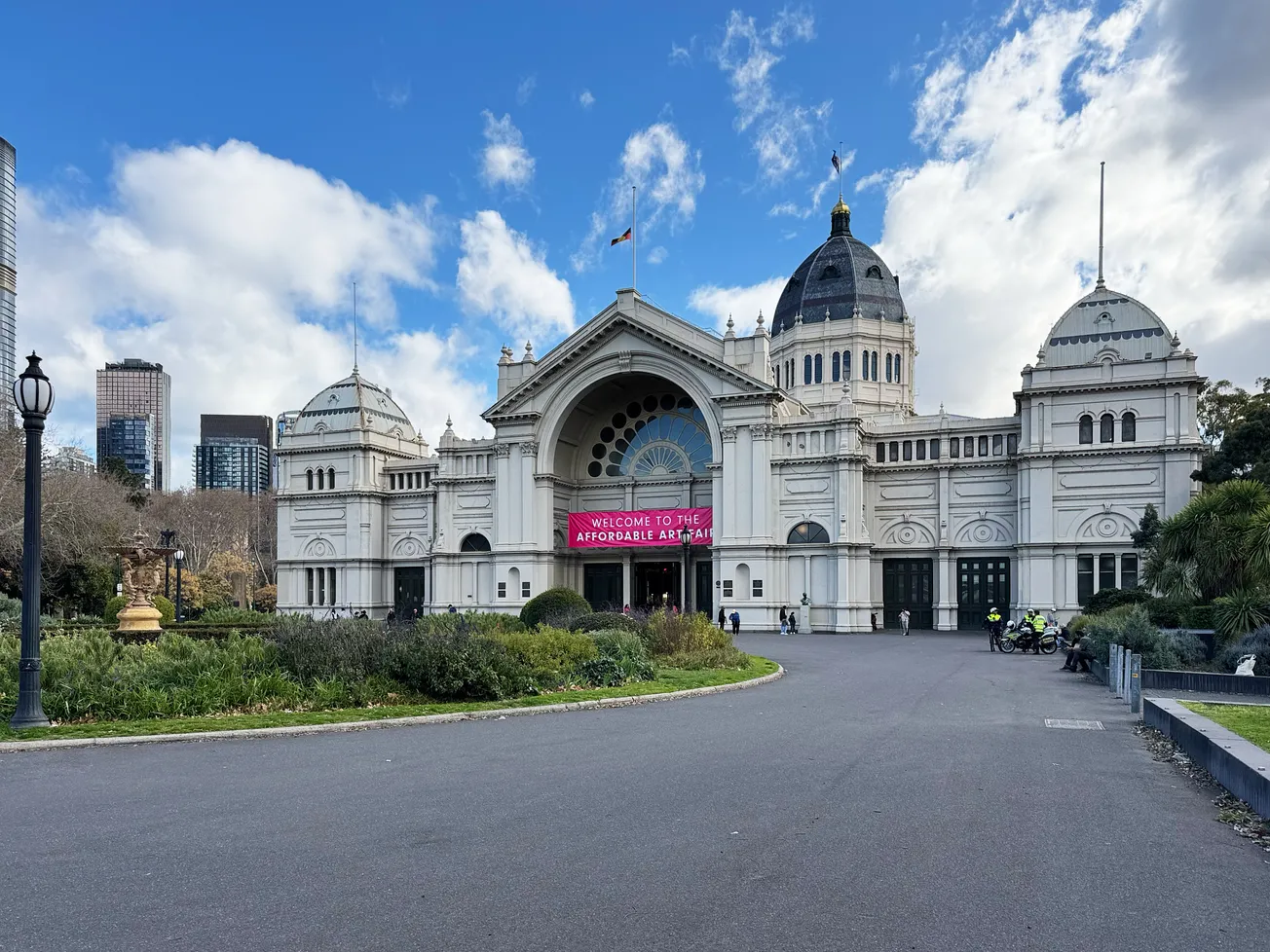Table of Contents
Art Minute
| Title: | Lewis Miller |
|---|---|
| Duration: | 30:00 |
| Year: | 2024 |
| Director/DOP: | Peter M Lamont |
| Music: | Peter M Lamont |
| Cameras: | Lumix S5, Mavic Mini3 Pro |
About Lewis Miller
Early Life and Background
Lewis Miller was born in Melbourne, Australia, in 1959. Growing up in an environment rich in art, he was encouraged by his family’s appreciation for painting and drawing. His father, a commercial artist, was an early influence, exposing Miller to the possibilities of a creative career. After completing his initial studies, Miller pursued a formal education in art, where he began to refine his technical skills and develop his distinctive, expressive style.
Artistic Development and Education
Miller trained at the Victorian College of the Arts (VCA), where he honed his skills in painting, focusing primarily on portraiture. His education at the VCA allowed him to explore various traditional and experimental painting techniques, giving him the foundation to experiment with realism and expressionism in his works. Over time, Miller’s practice evolved towards a deeply intuitive style, favouring rough textures and intense colour contrasts.
Major Works and Recognition
Among Miller’s most renowned works are his award-winning portraits, which include notable figures in Australian art and society. He won the Archibald Prize in 1998 for his portrait of fellow artist Allan Mitelman, marking a significant achievement in his career. Other notable portraits include those of politician Malcolm Fraser and Australian artist Janet Dawson. In addition to his portraiture, Miller gained prominence as an official Australian war artist during the Iraq War in 2003, commissioned by the Australian War Memorial. His war-related pieces captured the intensity and humanity of conflict, offering a rare perspective on contemporary military life.
Technique and Style
Miller is known for his vigorous, painterly technique, employing thick brushstrokes and a rich colour palette that emphasises the emotional depth of his subjects. His works often have a tactile quality, with layered, impasto surfaces that convey a sense of immediacy and physical presence. Miller’s use of oil on canvas allows for rich, detailed textures that enhance his subjects' psychological complexity. His portraits are marked by an interest in capturing both the physical likeness and inner lives of his subjects, often revealing a raw, candid side of them.
Legacy and Influence
Lewis Miller’s influence on contemporary Australian portraiture is significant. His award-winning works and his service as a war artist have inspired a generation of Australian painters to explore the emotional and psychological depths of portraiture. His contributions to public and private collections have ensured that his work remains accessible to a wide audience, and his role in documenting Australian society and history has cemented his reputation as a major figure in Australian art.
References
- Australian War Memorial. "Lewis Miller – Australian War Artist." Retrieved from awm.gov.au
- National Portrait Gallery, Canberra. "Lewis Miller: Portraits and Public Figures." Retrieved from portrait.gov.au
- Art Gallery of New South Wales. "Archibald Prize Winners: Lewis Miller." Retrieved from artgallery.nsw.gov.au

